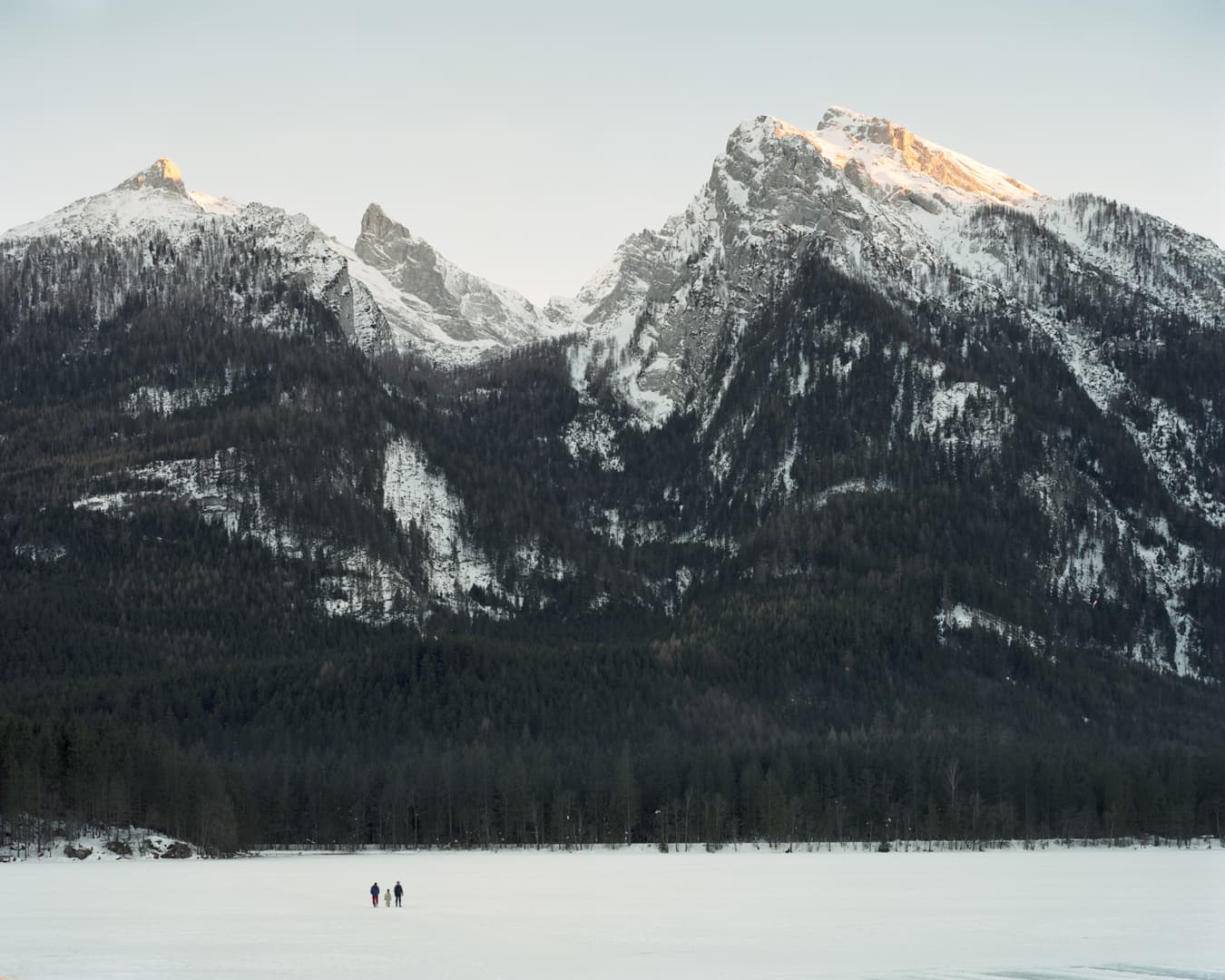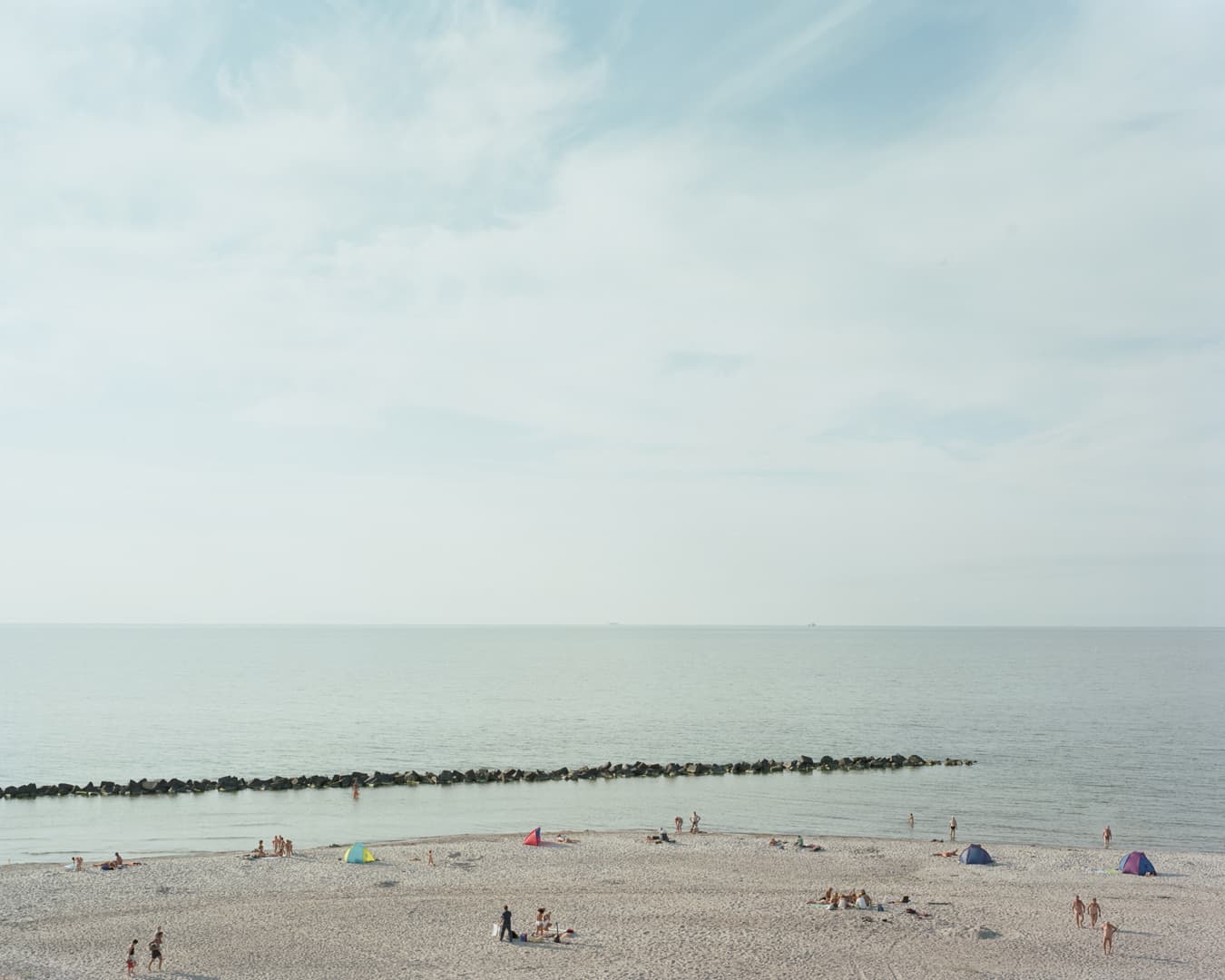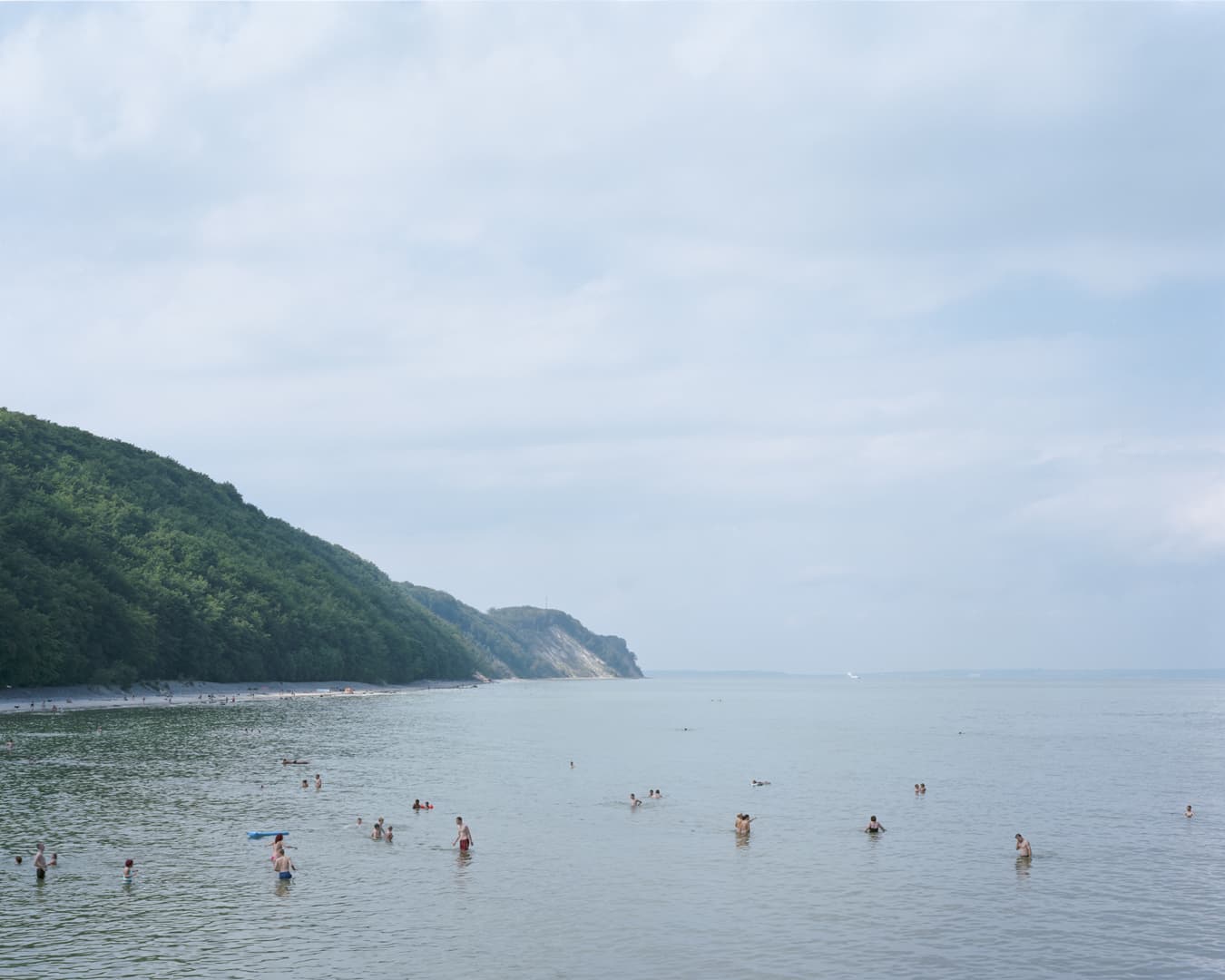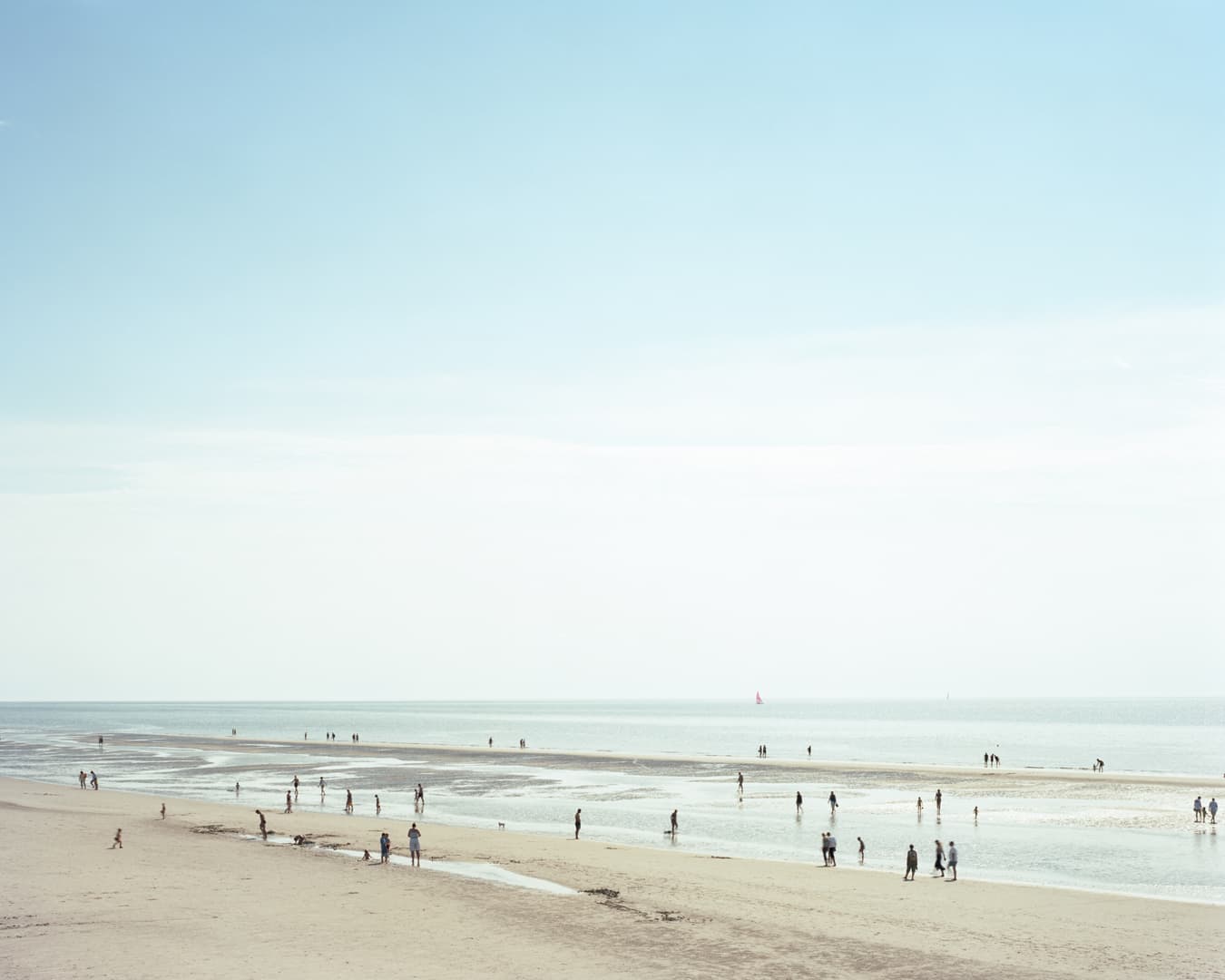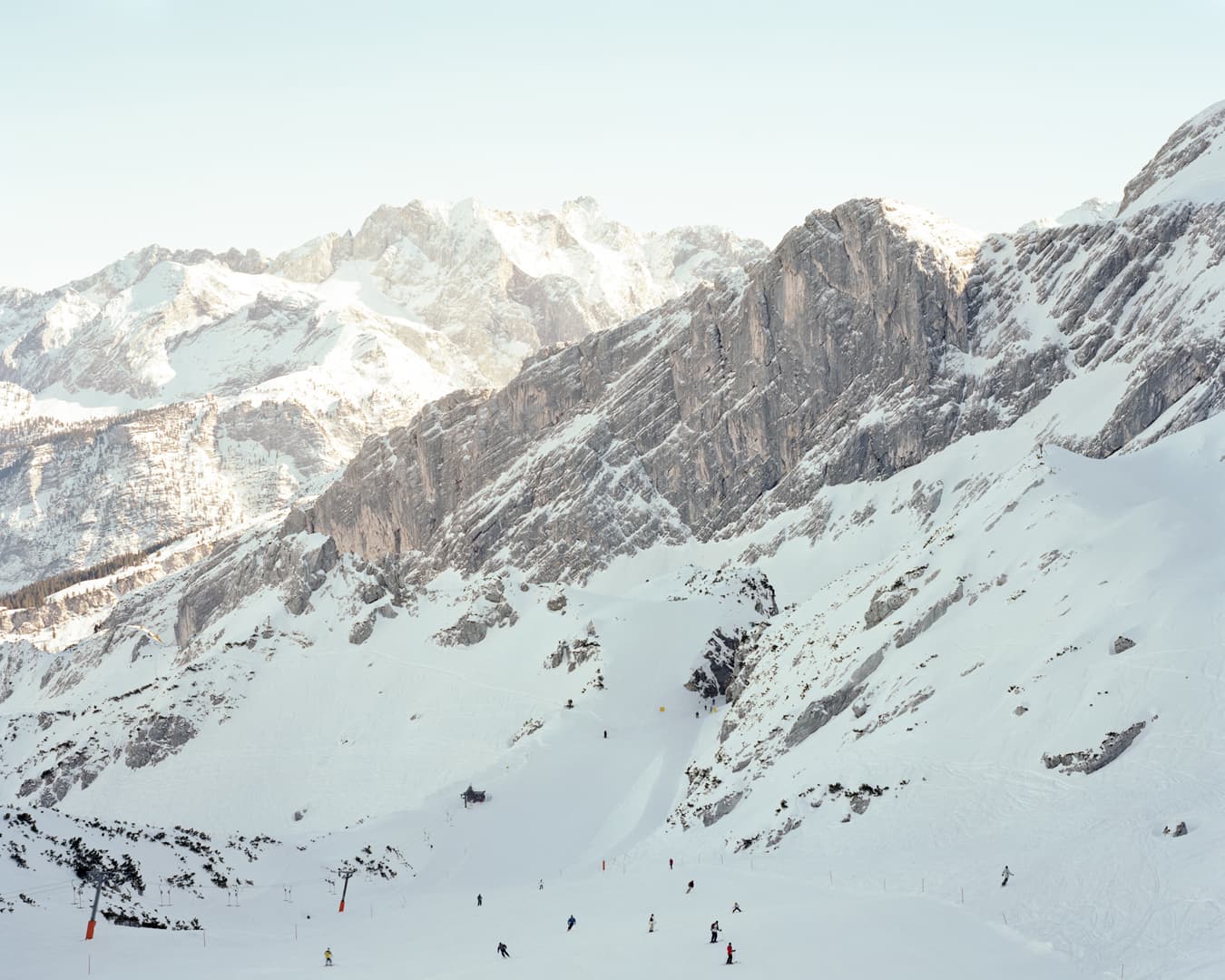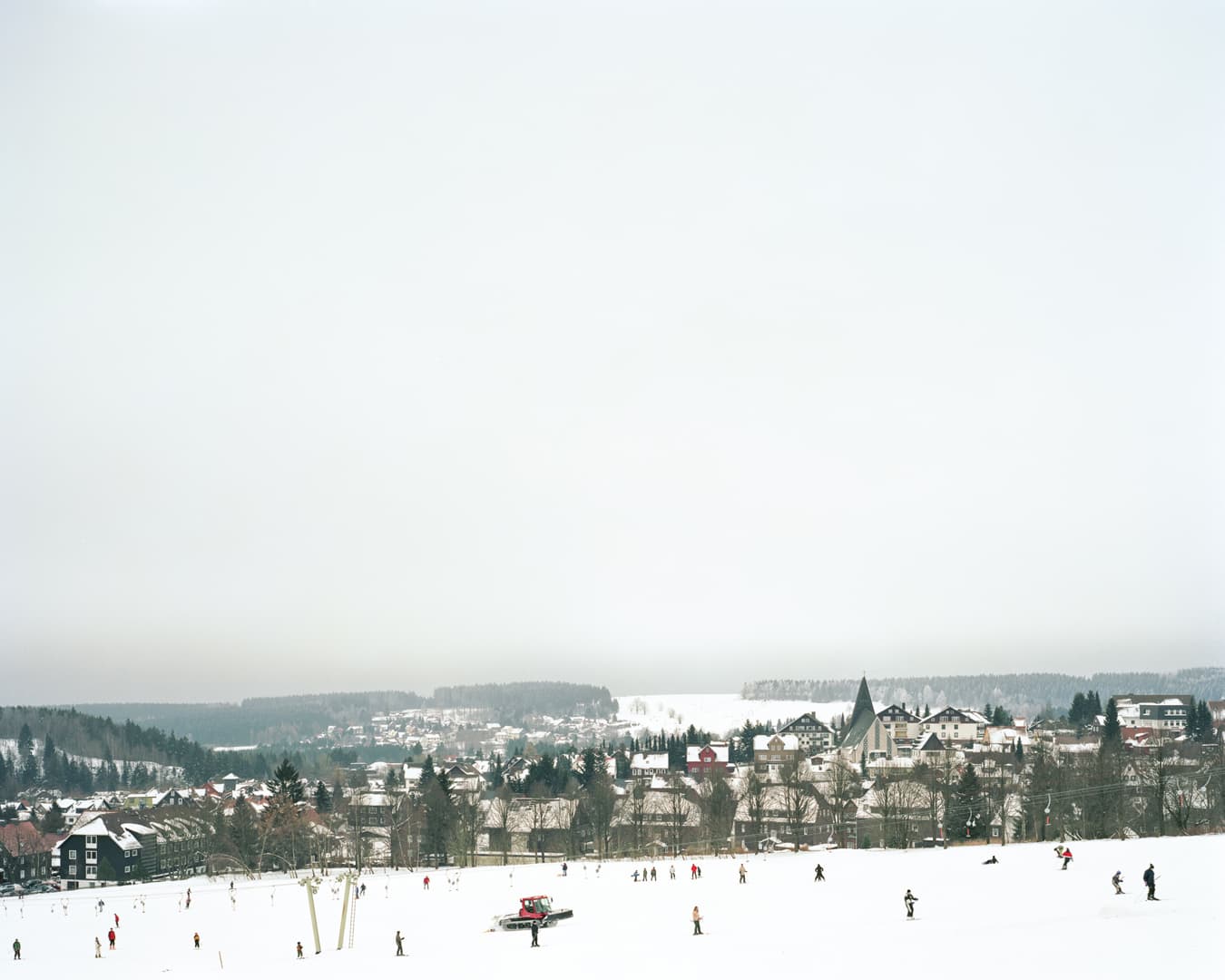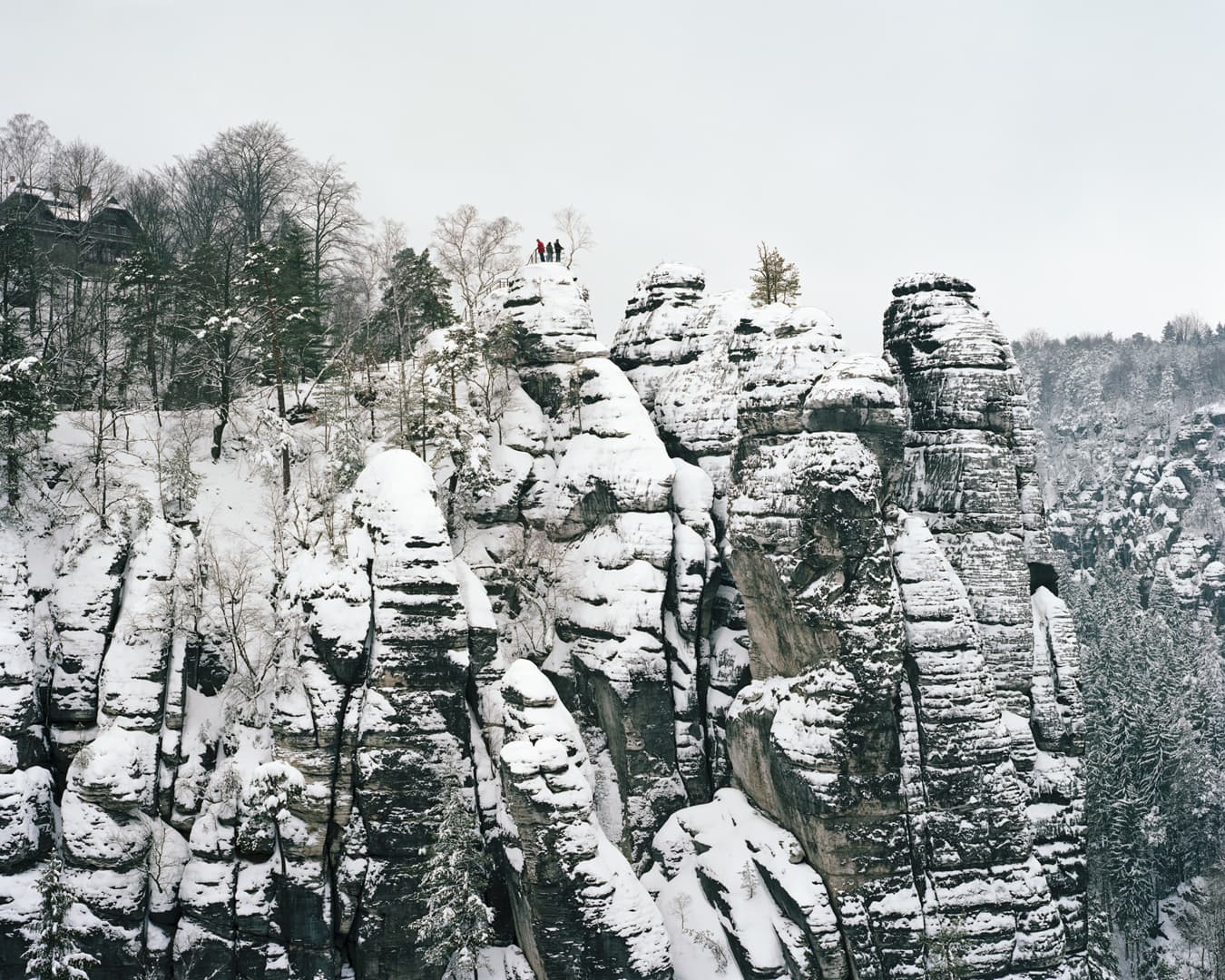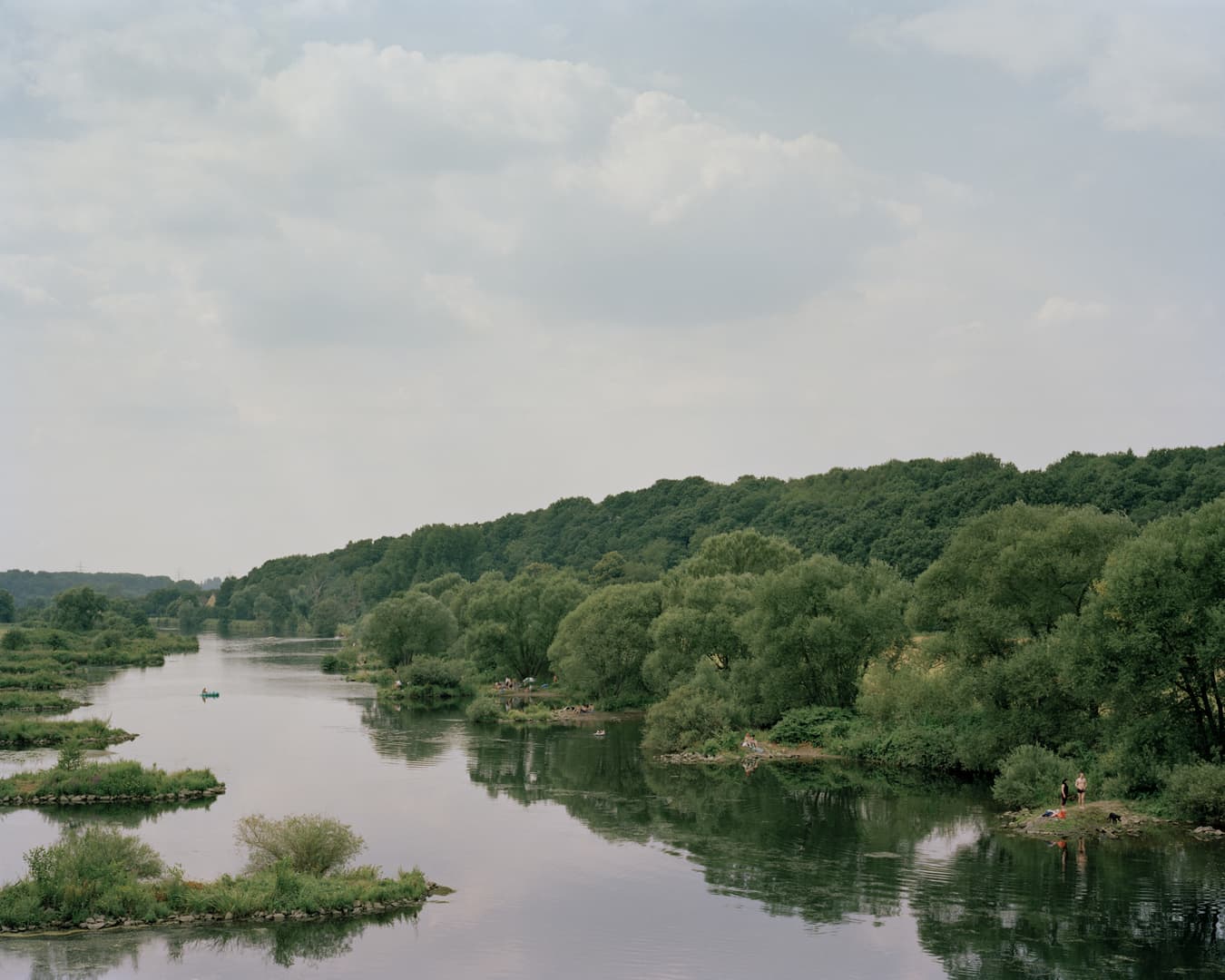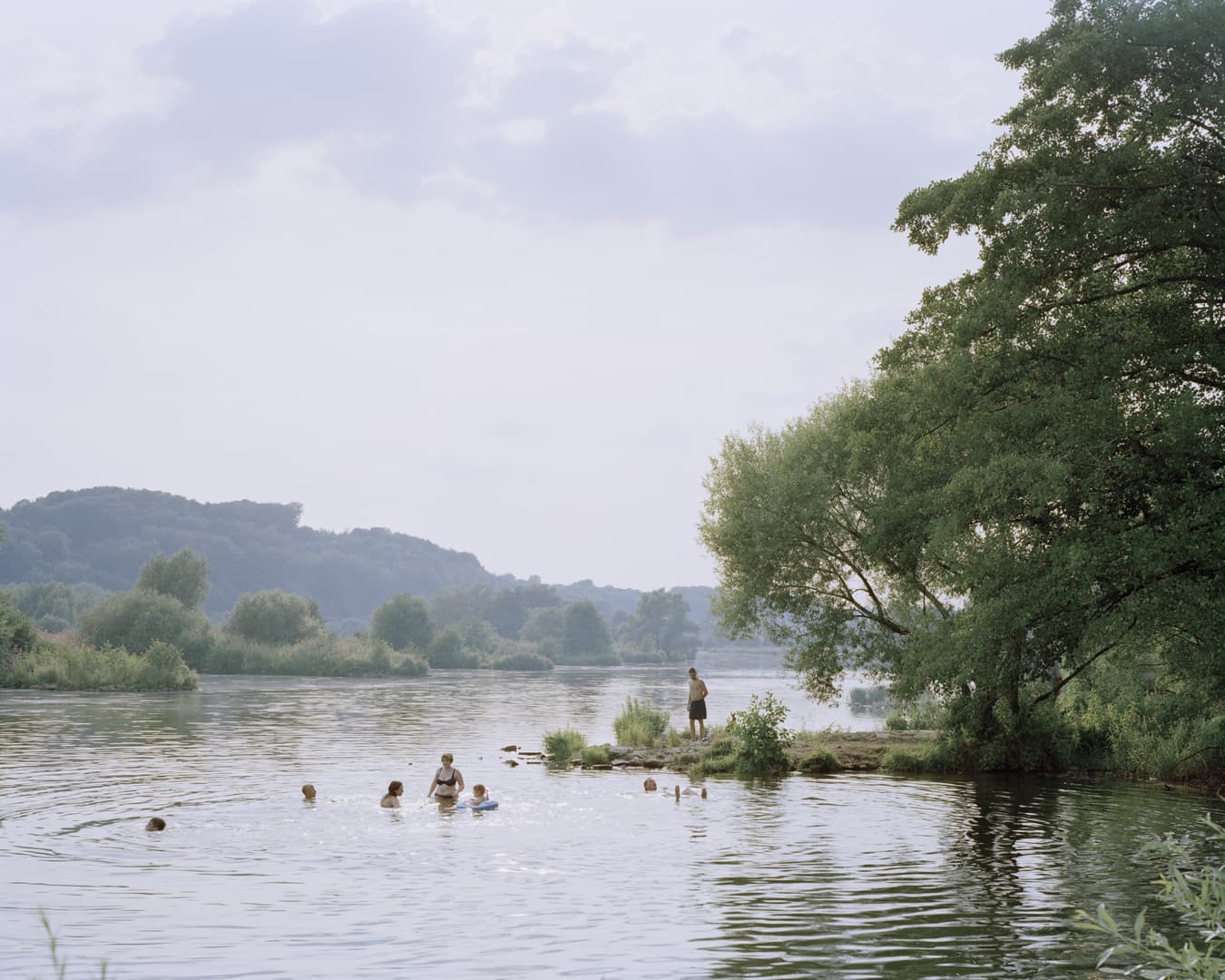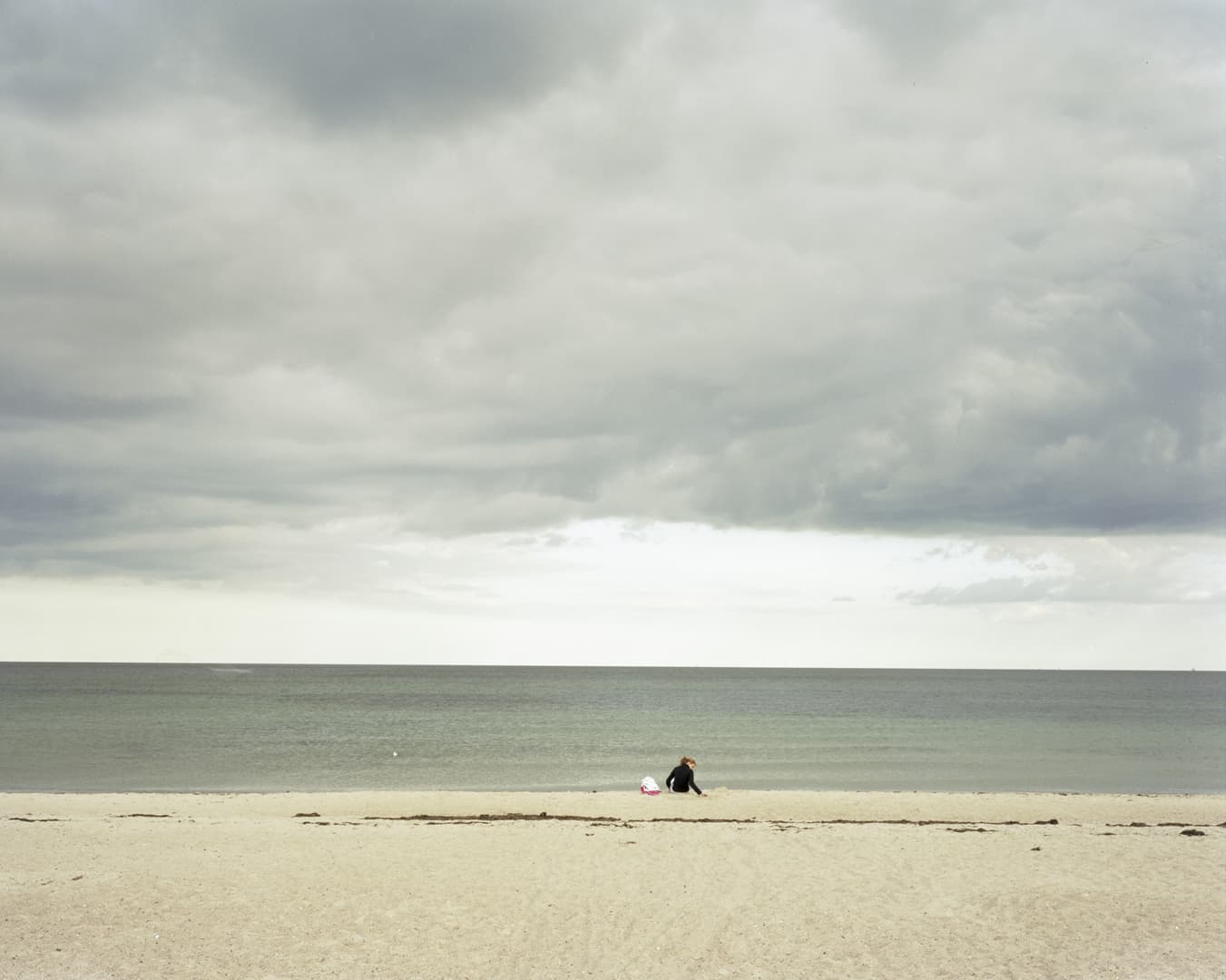Thus a typical German feeling for landscape devel- oped, filled with all our romantic notions. We always see the German countryside through a special prism that turns it into the landscape of the soul — with all the ambivalence that implies, since our less admirable fears are there as well. But what is important is that
it is never the same picture. That too is okay, because at least the right questions remain open as long as the fragmentation persists.
Edgar Reitz, Die Zeit, December 2004
Heimat —
I always used to head south. Later I photographed the South East — India, Nepal, Burma, Thailand,
and then the megacities of the Asian tiger economies. There I could trust myself to give vent to my fascina- tion and even find things beautiful.
Around the same time, German photography devel- oped a taste for garage doors, cardboard boxes, and pale, pimply young managers rendered with suppos- edly critical detachment. The pictures purported to be documentary and objective. To advocates of the style, any emotion was suspect, any touch of beauty a betrayal of the supposedly new German photogra- phy. And indeed it suited the new era. The companies of the New Economy and their journalist beaters dis- covered the apparent “authenticity” for themselves, thereby conferring a kind of credibility on themselves without realizing that they could no longer sell any- thing as old wine in old bottles. Of course, even New German Photography, whose pioneers justly attacked reach-me-down pictorial concepts with their pictures, is nothing more than an aesthetic pattern.
Later, pasty-faced young people were displayed on hoardings outside the window of my studio in Ham- burg, advertising for a large German company. This was the first time the idea occurred to me to photo- graph something “beautiful”, though it did not have to be beautiful — the German Landscape. What clinched it was my appointment to a post at the HfK art college in Bremen in 2002, which meant I would have to spend at least eight months of the year in Germany.
It therefore seemed like a good idea to get cracking with the job late that summer. I wanted to be clear in my mind what my relationship with my image of Ger- many is, the country that shaped me emotionally and culturally — in short, my home country. It may seem a little conservative, but the paintings of Caspar David Friedrich have influenced my notions of “German Landscape” more than those of Anselm Kiefer. And the Monk by the Sea is for me the quintessential visual rendering of the German landscape of the soul. Depressive and immensely full of hope.
Supposedly the first “modern” picture, it corresponds to the discovery of my own “photographic mod- ernism” — the pictures of American color photogra- pher Joel Sternfeld. His American Prospects in 1987 was largely responsible for my decision to abandon black-and-white photography. In the pictorial scheme for Heimat, mention is made of both Friedrich and Sternfeld, as well as various other contemporaries. That is intentional and meant as a tribute. But mine is a different theme — my photographs are projection surfaces ofpost-postmodernist man’s yearning for nature, though the silence is no longer the preserve 7 of the solitary figure. There are always other people there, in red Goretex jackets. But when you look at the pictures, it’s not a problem — in fact, quite the contrary. It is the figures and their distribution on the surface that turn the photos into pictures. That is what distinguishes the sensation you get on look- ing at a real landscape from looking at a picture. Although superficially documentary, with a sort of critical look (tourism and all that), the pictures are nonetheless “beautiful” as aesthetic statements. But if you probe further, they raise all sorts of questions for everyone that cannot be explained by esthetics alone.
Having a “home” means having roots, which is not the same as being rooted to the spot. The earth that contains the roots determines the code but not the substance. So Heimat is not a book about Germany as a homeland but sketches in a picture that, over and beyond the darkness of the past, reunification and the “German disease,” captures a personal piece of visual and cultural history.
Peter Bialobrzeski

